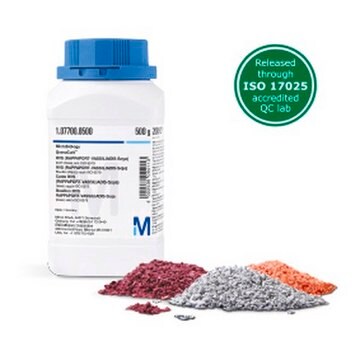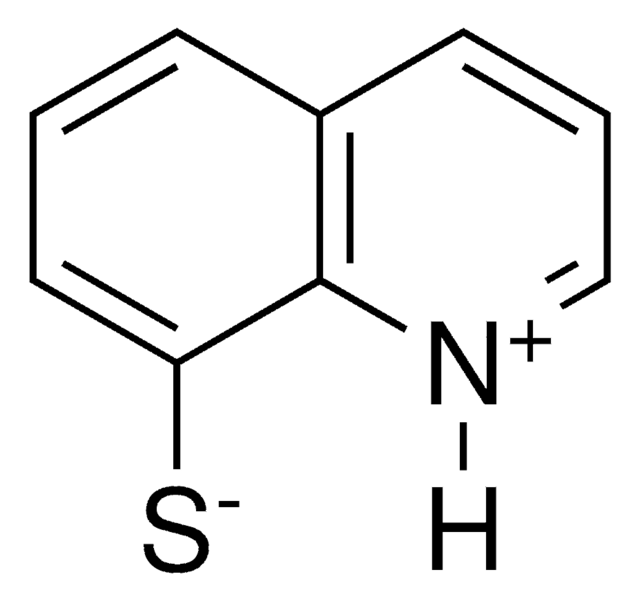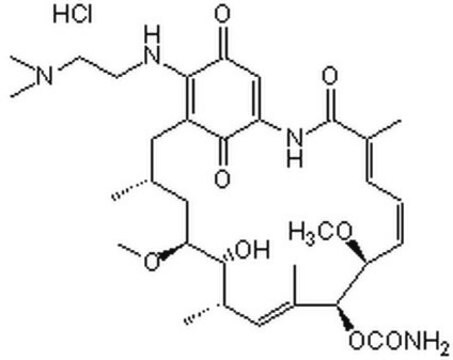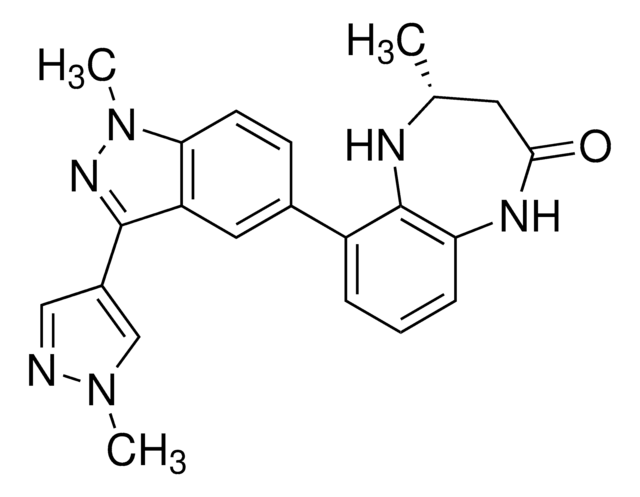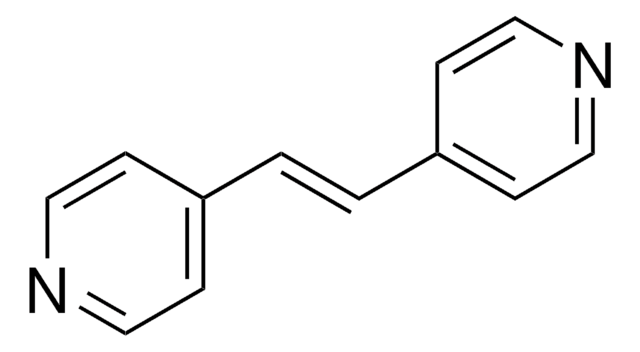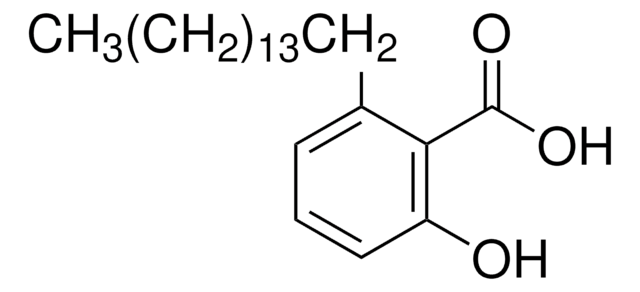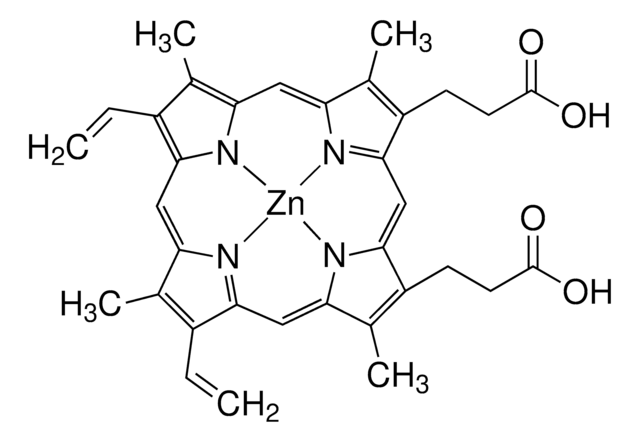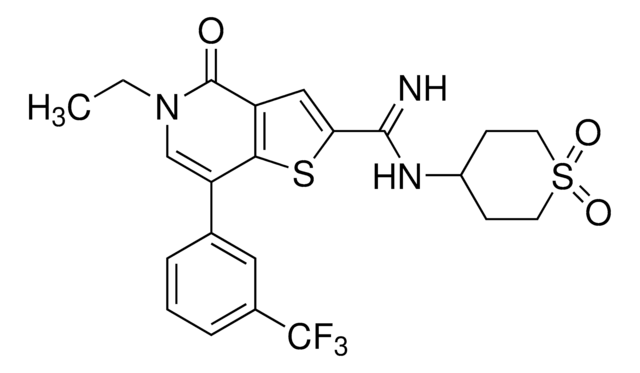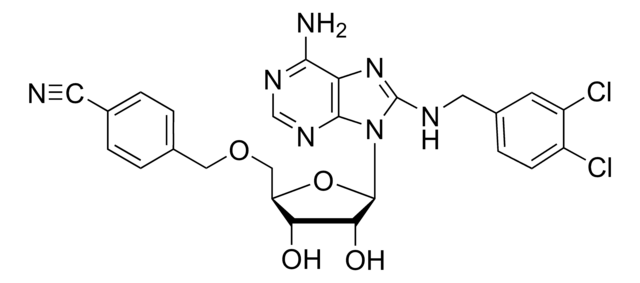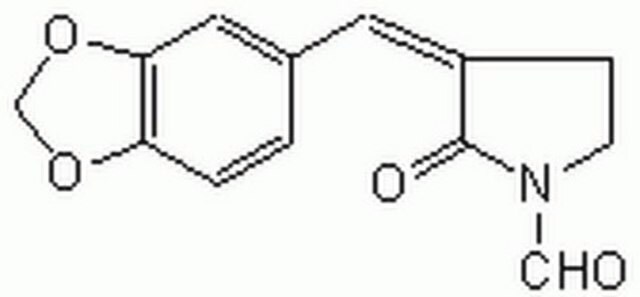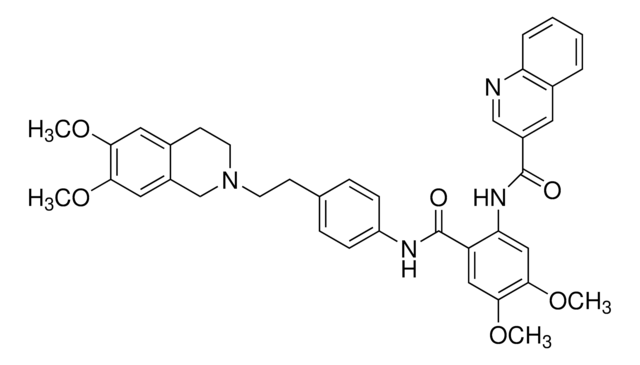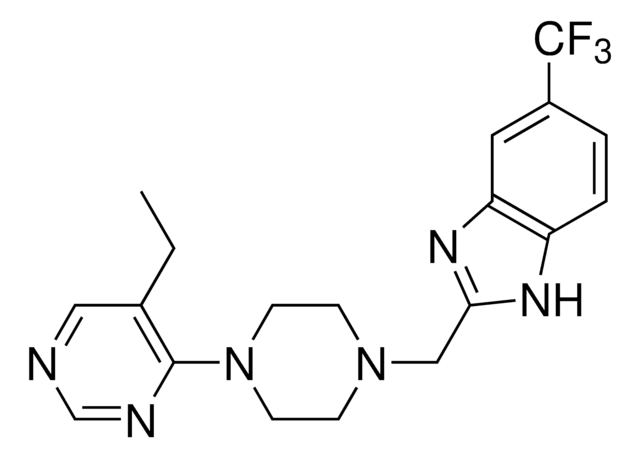Kluczowe dokumenty
A8476
17-(Allylamino)-17-demethoxygeldanamycin
≥98% (HPLC), solid
Synonim(y):
17-(Allylamino)geldanamycin, 17-AAG, 17-Demethoxy-17-allylamino geldanamycin, CP 127374, Geldanamycin,17-demethoxy-17-(2-propenylamino)-, NSC 330507, Tanespimycin
About This Item
Polecane produkty
Poziom jakości
Próba
≥98% (HPLC)
Formularz
solid
rozpuszczalność
DMSO: soluble
methanol: soluble
spektrum działania antybiotyku
neoplastics
Tryb działania
enzyme | inhibits
Warunki transportu
wet ice
temp. przechowywania
−20°C
ciąg SMILES
CO[C@H]1C[C@H](C)CC2=C(NCC=C)C(=O)C=C(NC(=O)\C(C)=C\C=C[C@H](OC)[C@@H](OC(N)=O)\C(C)=C\[C@H](C)[C@H]1O)C2=O
InChI
1S/C31H43N3O8/c1-8-12-33-26-21-13-17(2)14-25(41-7)27(36)19(4)15-20(5)29(42-31(32)39)24(40-6)11-9-10-18(3)30(38)34-22(28(21)37)16-23(26)35/h8-11,15-17,19,24-25,27,29,33,36H,1,12-14H2,2-7H3,(H2,32,39)(H,34,38)/b11-9-,18-10+,20-15+/t17-,19+,24+,25+,27-,29+/m1/s1
Klucz InChI
AYUNIORJHRXIBJ-TXHRRWQRSA-N
informacje o genach
human ... HSP90AA1(3320) , HSP90AB1(3326)
Opis ogólny
Zastosowanie
- to study its effects on hippocampal neurons
- to analyze its effects on yes-associated protein (YAP) phosphorylation in adenocarcinoma human alveolar basal epithelial cells and human breast epithelial cells
- to study its effects on lifespan extension and health in Caenorhabditis elegans
Działania biochem./fizjol.
Cechy i korzyści
Kod klasy składowania
11 - Combustible Solids
Klasa zagrożenia wodnego (WGK)
WGK 3
Temperatura zapłonu (°F)
Not applicable
Temperatura zapłonu (°C)
Not applicable
Środki ochrony indywidualnej
Eyeshields, Gloves, type N95 (US)
Wybierz jedną z najnowszych wersji:
Masz już ten produkt?
Dokumenty związane z niedawno zakupionymi produktami zostały zamieszczone w Bibliotece dokumentów.
Klienci oglądali również te produkty
Produkty
We present an article about how proliferating cells require the biosynthesis of structural components for biomass production and for genomic replication.
Nasz zespół naukowców ma doświadczenie we wszystkich obszarach badań, w tym w naukach przyrodniczych, materiałoznawstwie, syntezie chemicznej, chromatografii, analityce i wielu innych dziedzinach.
Skontaktuj się z zespołem ds. pomocy technicznej